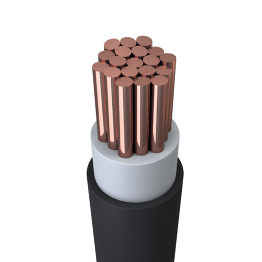
Photovoltaic wire, commonly referred to as PV wire, is a specialized electrical wire designed for use in solar power systems. It plays a crucial role in transmitting the electricity generated by solar panels to inverters and other system components. PV wire is built to withstand harsh environmental conditions, including exposure to UV radiation, extreme temperatures, and moisture.
Definition of PV Wire
PV wire is a single-conductor electrical wire that meets UL 4703 standards for solar applications. It features extra insulation to protect against environmental factors and high-voltage operation, making it an essential component in solar photovoltaic systems.
How PV Wire Is Made
The production of photovoltaic wire involves several key steps:
Conductor Material Selection
- Copper: The most common material due to its high electrical conductivity and durability.
- Aluminum: Used in some applications where cost savings are needed, though it requires a thicker gauge to match copper’s conductivity.
Stranding Process
- PV wire can be solid or stranded.
- Stranded PV wire is more flexible, making it easier to install in complex solar setups.
Insulation and Jacketing
- PV wire is insulated with XLPE (Cross-Linked Polyethylene), which provides superior UV resistance, moisture protection, and high-temperature tolerance.
- The outer jacket ensures durability and longevity in outdoor conditions.
Testing and Certification
- Before being used in solar applications, PV wire undergoes rigorous electrical, mechanical, and environmental testing to meet safety and performance standards.
Why Is It Called Photovoltaic Wire?
The term photovoltaic refers to the process of converting sunlight into electricity using solar panels. The word comes from:
- “Photo” (Greek for light)
- “Voltaic” (derived from Alessandro Volta, a pioneer in electricity)
Since PV wire is specifically designed for use in photovoltaic systems, it is named accordingly.
Applications of PV Wire
PV wire is used in solar power systems to:
- Connect solar panels within an array.
- Transmit DC power from solar panels to charge controllers, inverters, or batteries.
- Handle high voltages in both residential and commercial solar installations.
Common Uses of PV Wire
- Residential solar systems: Rooftop solar panel wiring.
- Utility-scale solar farms: Large-scale photovoltaic system connections.
- Off-grid solar installations: Used in remote areas for solar-powered setups.
Conclusion
Photovoltaic (PV) wire is an essential component of solar energy systems, designed to handle high voltage, harsh environmental conditions, and long-term exposure to sunlight. Made from copper or aluminum, it is insulated with UV-resistant materials like XLPE, ensuring durability and efficiency. PV wire plays a vital role in connecting solar panels and delivering electricity safely, making it the best choice for residential, commercial, and industrial solar installations. By selecting the right PV wire, you can ensure a safe, efficient, and long-lasting solar energy system.

